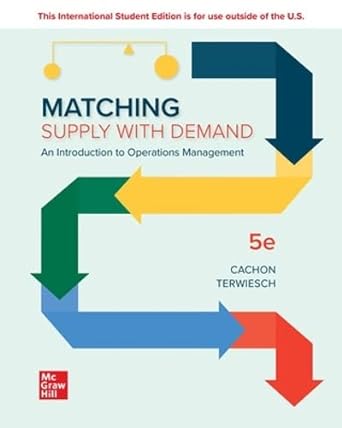LaVilla is a village in the Italian Alps. Given its enormous popularity among Swiss, German, Austrian, and
Question:
LaVilla is a village in the Italian Alps. Given its enormous popularity among Swiss, German, Austrian, and Italian skiers, all of its beds are always booked in the winter season and there are, on average, 1,200 skiers in the village. On average, skiers stay in LaVilla for 10 days.
a. Assuming that units in inventory are valued (based on COGS) at $1,000 per unit and are sold for $2,000 per unit, how fast does the company turn its inventory? The company uses a 25 percent per year cost of inventory. That is, for the hypothetical case that 1 unit of $1,000 would sit exactly 1 year in inventory, the company charges its operations division a $250 inventory cost.
b. What—in absolute terms—is the per-unit inventory cost for a product that costs $1,000?
a. How many times each year does the retailer turn its inventory?
b. The company uses a 40 percent per year cost of inventory. That is, for the hypothetical case that 1 item of $100 COGS would sit exactly 1 year in inventory, the company charges itself a $40 inventory cost. What is the inventory cost for a
$30 (COGS) item? You may assume that inventory turns are independent of the price.
a. How many new skiers are arriving—on average—in LaVilla every day?
b. A study done by the largest hotel in the village has shown that skiers spend on average $50 per person on the first day and $30 per person on each additional day in local restaurants. The study also forecasts that—due to increased hotel prices—the average length of stay for the 2003/2004 season will be reduced to 5 days. What will be the percentage change in revenues of local restaurants compared to last year (when skiers still stayed for 10 days)? Assume that hotels continue to be fully booked!
Step by Step Answer:

Matching Supply With Demand An Introduction To Operations Management
ISBN: 169608
5th Edition
Authors: Gerard Cachon, Christian Terwiesch





